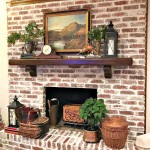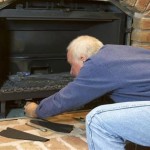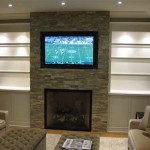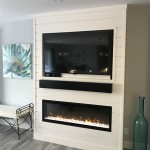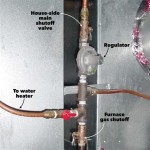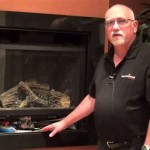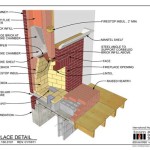Natural Gas Fireplace Insert Heaters: A Comprehensive Guide
Natural gas fireplace insert heaters offer a convenient and efficient alternative to traditional wood-burning fireplaces. These units transform an existing masonry fireplace into a source of supplemental heat while providing the aesthetic appeal of a traditional fire. Understanding the features, operation, and maintenance of these inserts is crucial for homeowners considering this upgrade.
A natural gas fireplace insert heater is essentially a self-contained appliance designed to be installed within the existing firebox of a masonry fireplace. It operates by burning natural gas to generate heat, which is then circulated into the room. The units are typically enclosed in a metal firebox and feature a glass front, allowing for a clear view of the flames. The installation process generally involves connecting the insert to an existing gas line and venting system, ensuring safe and efficient operation.
The primary components of a natural gas fireplace insert heater include the burner, the gas valve, the igniter, the venting system, and the control system. The burner is where the natural gas is combusted, producing the flames and heat. The gas valve regulates the flow of natural gas to the burner, ensuring a consistent and safe fuel supply. The igniter, typically an electronic spark or a pilot light, initiates the combustion process. The venting system carries the exhaust gases produced during combustion safely out of the home. The control system allows the user to adjust the flame height, heat output, and other settings.
Key Benefits of Natural Gas Fireplace Inserts
Natural gas fireplace insert heaters offer several advantages over traditional wood-burning fireplaces. These benefits include increased efficiency, reduced emissions, ease of use, and enhanced safety.
One of the most significant benefits of natural gas inserts is their improved energy efficiency. Wood-burning fireplaces typically lose a significant amount of heat through the chimney, whereas gas inserts are designed to retain and circulate heat more effectively. Modern gas inserts can achieve efficiency ratings of 70-85%, meaning that a larger percentage of the fuel's energy is converted into usable heat for the home. This can translate to lower heating costs and reduced energy consumption.
Compared to wood-burning fireplaces, natural gas inserts produce significantly fewer emissions. Wood combustion releases particulate matter, carbon monoxide, and other pollutants into the atmosphere. Natural gas, when burned properly, produces primarily carbon dioxide and water vapor. The sealed firebox and direct venting system of gas inserts further minimize the release of harmful pollutants into the home. This contributes to improved indoor air quality and reduces the environmental impact of home heating.
Operating a natural gas fireplace insert is considerably easier than managing a wood-burning fireplace. There is no need to chop, stack, or carry wood. Starting a fire is as simple as flipping a switch or pressing a button on a remote control. Many models offer thermostatic controls, allowing users to maintain a consistent room temperature automatically. The lack of ash and debris also eliminates the need for frequent cleaning and maintenance.
Natural gas fireplace inserts offer enhanced safety compared to traditional fireplaces. The sealed firebox prevents embers and sparks from escaping into the room, reducing the risk of fire hazards. The direct venting system ensures that combustion gases are safely vented outside the home, minimizing the risk of carbon monoxide poisoning. Many models also include safety features such as automatic shut-off valves in case of gas leaks or malfunctions. These safety features provide peace of mind for homeowners.
Selecting the Right Natural Gas Fireplace Insert
Choosing the appropriate natural gas fireplace insert involves considering various factors, including heating capacity, venting requirements, aesthetic preferences, and budget constraints.
The heating capacity of a gas insert is measured in British Thermal Units (BTUs). Selecting an insert with the appropriate BTU rating is crucial for effectively heating the desired space. Consider the size of the room, the insulation levels, and the climate in which the home is located. A larger room or a home in a colder climate will require an insert with a higher BTU output. Consulting with a qualified HVAC professional can help determine the optimal BTU rating for specific needs.
The venting system is a critical component of a natural gas fireplace insert. There are two main types of venting systems: direct vent and B-vent. Direct vent systems draw combustion air from outside the home and vent exhaust gases directly outside through a sealed system. This type of venting is generally considered safer and more efficient. B-vent systems use room air for combustion and vent exhaust gases through an existing chimney. The choice of venting system will depend on the existing chimney structure and local building codes. It is essential to ensure that the venting system is properly installed and maintained to prevent carbon monoxide poisoning.
Natural gas fireplace inserts are available in a wide range of styles and finishes to complement any home décor. Options include traditional log sets, contemporary glass media, and various color finishes. Consider the overall aesthetic of the room and choose an insert that enhances the existing décor. The glass front of the insert can also be customized with different types of glass, such as clear, tinted, or reflective glass.
The cost of a natural gas fireplace insert can vary depending on the heating capacity, features, and brand. Installation costs can also vary depending on the complexity of the project and local labor rates. It is important to obtain quotes from multiple installers and compare prices. In addition to the initial cost, consider the ongoing operating costs, such as the price of natural gas and regular maintenance. While the initial investment may be higher than a traditional wood-burning fireplace, the long-term benefits of improved efficiency and reduced emissions can offset the cost over time.
Maintaining Your Natural Gas Fireplace Insert
Regular maintenance is essential for ensuring the safe and efficient operation of a natural gas fireplace insert. This maintenance includes cleaning the glass front, inspecting the venting system, and scheduling professional inspections.
The glass front of the insert can become dirty over time due to soot and residue buildup. Clean the glass regularly with a glass cleaner specifically designed for fireplace inserts. Avoid using abrasive cleaners or scouring pads, as these can scratch the glass. Follow the manufacturer's instructions for cleaning the glass, and ensure that the insert is cool before cleaning.
The venting system should be inspected regularly for blockages or damage. Check for signs of corrosion, leaks, or debris buildup. Clear any obstructions, such as bird nests or leaves, from the vent opening. If any damage is detected, contact a qualified technician for repairs. Proper venting is crucial for preventing carbon monoxide poisoning.
Schedule a professional inspection of the natural gas fireplace insert at least once a year. A qualified technician can inspect the burner, gas valve, igniter, and venting system to ensure that all components are functioning properly. The technician can also clean and service the unit to optimize its performance and extend its lifespan. Regular professional inspections can help identify potential problems before they become serious and costly.
Proper care and maintenance will not only extend the life of the insert but safeguard the well-being of the home's occupants.

Gas Fireplaces Inserts Stoves And Heaters The Hearth

Kozy Heat Fireplaces And Inserts Portland Or Nw Natural Appliance Center

Nordik 34i Kozy Heat Fireplaces

Fireplace Insert Guide Fireplaces Direct Learning Center

Gas Fireplace Inserts Pros And Cons Of Ventless Fireplaces

Pros And Cons Of Direct Vent Gas Fireplaces Tarantin Industries

Majestic Trilliant 35 Inch Direct Vent Natural Gas Fireplace Insert
How To Install Gas Fireplace Insert Heat Glo

Elevation 36 Direct Vent Fireplace Natural Gas Electronic Ignition

Fireplace Inserts Log Sets Built In Fireplaces Nw Natural Appliance Center
Related Posts

